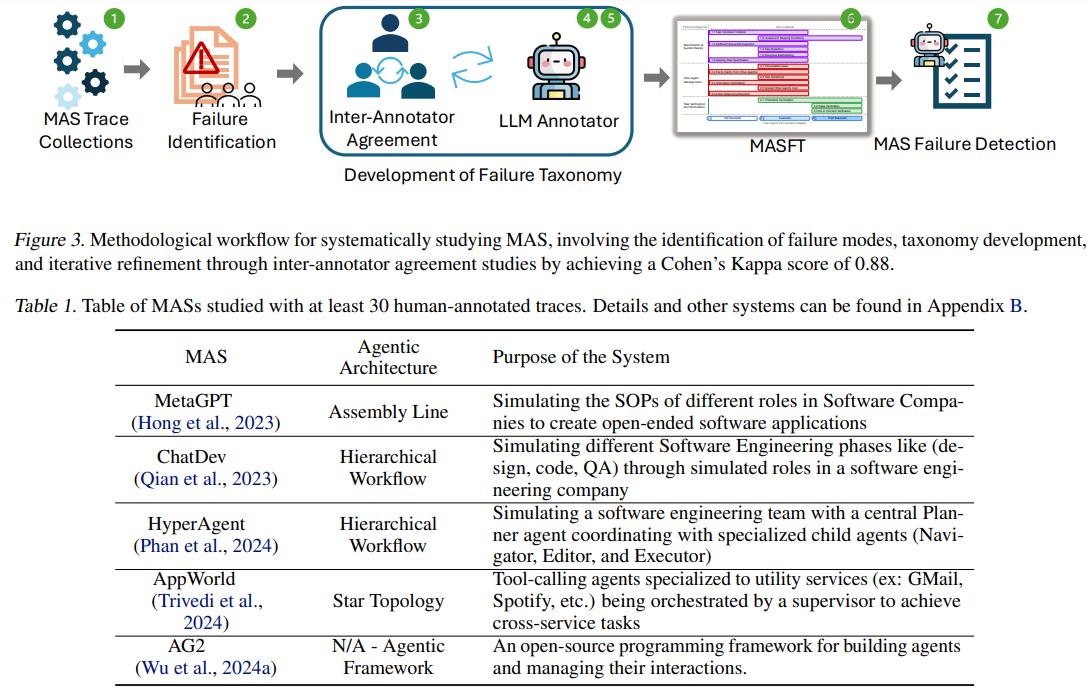
Understanding and Improving Multi-Agent Systems in AI
Introduction to Multi-Agent Systems
Multi-Agent Systems (MAS) involve the collaboration of multiple AI agents to perform complex tasks. Despite their potential, these systems often underperform compared to single-agent frameworks. This underperformance is primarily due to coordination inefficiencies and failure modes that hinder effective collaboration among agents.
Challenges Faced by Multi-Agent Systems
MAS experiences several key challenges that contribute to high failure rates:
- Task Misalignment: Agents may not share common goals or understand their roles adequately.
- Reasoning-Action Mismatches: Agents may struggle to synchronize their actions based on collective reasoning.
- Ineffective Verification Mechanisms: Inadequate checks can lead to unresolved issues before task completion.
Research indicates that even advanced MAS solutions, like ChatDev, often yield low success rates, challenging the reliability of these systems.
Addressing MAS Inefficiencies
While past studies have focused on specific elements such as workflow memory and communication flows, a comprehensive strategy for enhancing MAS reliability remains lacking. Previous findings suggest that overcomplicating frameworks can introduce additional risks. Therefore, a clearer, modular design is essential for enhancing performance.
Research Insights and Case Studies
A groundbreaking study from researchers at UC Berkeley and Intesa Sanpaolo examined five MAS frameworks across 150 tasks. They identified 14 distinct failure modes, categorized into three main areas:
- System Design Flaws
- Inter-Agent Misalignment
- Task Verification Issues
Using an innovative LLM-as-a-judge pipeline, researchers achieved high accuracy in evaluating these failures, leading to the development of the Multi-Agent System Failure Taxonomy (MASFT). This work highlights the need for further structural redesigns to improve overall system effectiveness.
Strategies for Improvement
Tactical Approaches
Tactical strategies for enhancing MAS include:
- Improving prompt design
- Refining agent roles
- Managing interactions effectively
- Establishing clear verification steps
Though these methods show some promise, their impact can vary greatly depending on implementation.
Structural Approaches
For more substantial improvements, structural strategies are required. These may include:
- Implementing robust verification mechanisms
- Standardizing communication protocols
- Utilizing reinforcement learning techniques
- Enhancing memory management capabilities
Case studies, such as MathChat and ChatDev, illustrate these strategies in practice. MathChat attempts to refine prompts and agent roles, demonstrating inconsistent results, while ChatDev enhances role adherence and modifies framework topology for better iterative verification.
Conclusion
In summary, the evolving landscape of Multi-Agent Systems reveals significant challenges and opportunities for improvement. With 14 unique failure modes identified and a new taxonomy established, it’s evident that merely addressing symptoms will not suffice. The research highlights the importance of structural changes to enable more effective collaboration among agents. As the field of MAS continues to grow, further exploration into coordination, verification, and communication strategies will be crucial for unlocking their full potential.
For businesses looking to leverage AI, understanding the intricacies of these systems can lead to better outcomes. Engaging with AI technology can transform your operations, from automating customer interactions to improving internal processes. By identifying key performance indicators (KPIs) to measure the impact of your AI investments and selecting tools that align with your goals, you can effectively harness the power of AI for your organization.
Should you need guidance in integrating AI into your business, please connect with us at hello@itinai.ru or through our social media platforms.
























